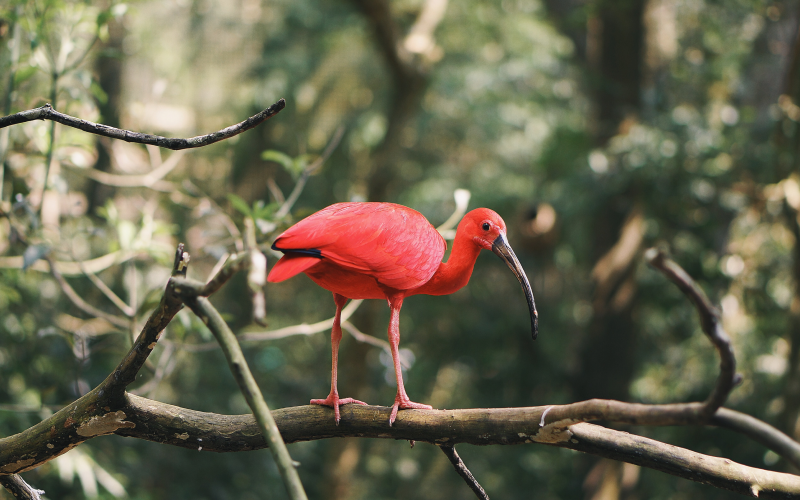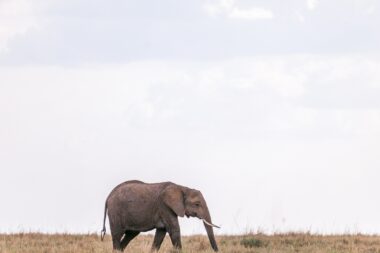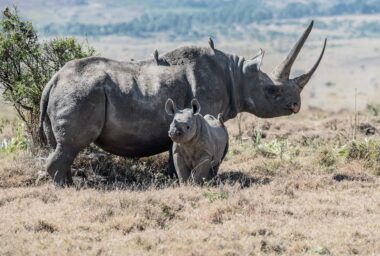The second-half of the 15th Conference of the Parties to the United Nations Convention on Biological Diversity, or COP15, took place from December 7-19, 2022. The event was held for two weeks in Montreal, Canada, having moved from China due to Covid restrictions. The first half of the conference was held virtually in 2021. The goal is to bring together global governments to focus on setting goals to halt and reverse nature loss. But did we achieve this goal and what actually happened at COP15? We breakdown some of the key decisions and progress made at this year’s conference.
What Is The COP15?
The conference sounds similar to the COP27, which you can read about in What Happened at the COP27?. But the COP27 is annual and focuses on climate change and lowering greenhouse gas emissions. And the COP15 is every two years and focuses on conserving the living and natural world. The main goal of the COP27 is to limit global warming to 1.5 degrees celsius. Whereas, the main goal of the COP15 is to stop the loss of nature and conserve our natural environment.
COP15 Goals
Having failed to meet any of our last set of goals under the 2020 Aichi Biodiversity Targets, this year introduced a new set of goals and targets. Overall the new Kunming-Montreal Global Biodiversity Framework includes four goals and 23 targets aimed at stopping and reversing nature loss. We’re at a point in history where these goals need to be met. Because of climate change, we’re seeing loss of life in the natural world at an unprecedented rate. Humans have changed three-quarters of the world’s land and at least one million plants and animals are now threatened with extinction. And without nature and healthy ecosystems, it’s not long until humans walk down the path of extinction too.

Goal A: Protect More Land and Increase Native Species
The first goal focuses on protecting natural ecosystems by increasing land area, native wild species and genetic diversity by 2050.

Goal B: Restore, Enhance and Manage Biodiversity
The second goal focuses on restoring and enhancing biodiversity lost over the last few decades by 2050.

Goal C: Share Resources And Knowledge Equitably
The third goal focuses on sharing resources and benefits from biodiversity fairly with indigenous and local communities by 2050.

Goal D: Fund and Finance The Framework (Especially For Developing Countries)
The fourth and final goal focuses on providing financing for the framework to be carried out by 2050.
COP15 Targets
All four of the COP15 goals focus on a timeline of 2050, but the 23 COP15 targets have a shorter timeline of 2030.
- Reduce areas of high biodiversity loss to close to zero by 2030.
- By 2030 at least 30 per cent of areas of coastal and marine ecosystems are under restoration.
- By 2030 at least 30 per cent of inland water and coastal and marine areas are conserved and managed, recognizing and respecting the rights of indigenous peoples and local communities.
- Stop human induced extinction of known threatened species and manage human-wildlife interactions to minimize conflict.
- Ensure that the use, harvesting and trade of wild species is sustainable, avoids overexploitation and minimizes impacts on non-target species and ecosystems.
- Reduce invasive alien species by at least 50 per cent by 2030.
- Lower pollution risks by 2030 by reducing the risk from pesticides and highly hazardous chemicals and working towards plastic elimination.
- Minimize the impact of climate change and ocean acidification on biodiversity.
- Ensure that the management and use of wild species are sustainable, protecting and encouraging customary sustainable use by indigenous peoples and local communities.
- Ensure agriculture, aquaculture, fisheries and forestry are managed sustainably, increasing the use of biodiversity friendly practices.
- Restore nature’s contributions to people such as regulation of air, water, and climate, soil health, pollination and reduction of disease risk.
- Significantly and sustainably increase the area and quality of green and blue spaces in urban and densely populated areas.
- Take measures at all levels to ensure the fair and equitable sharing of benefits that arise from genetic resources and from digital sequence information on genetic resources.
- Ensure the full integration of biodiversity into policies, regulations, planning and development processes, aligning public and private activities, fiscal and financial flows with the goals and targets of the framework.
- Take measures to encourage and enable businesses to disclose their impacts on biodiversity.
- Reduce the global footprint of consumption by halving global food waste, significantly reducing overconsumption and substantially reducing waste generation by 2030.
- Implement biosafety, biotechnology handling and distribution measures.
- Eliminate incentives and subsidies that are harmful for biodiversity, reducing them by at least 500 billion United States dollars per year by 2030.
- Increase financial resources from all sources, in an effective, timely and easily accessible way by 2030 by least 200 billion US dollars per year.
- Strengthen access to and transfer of technology, particularly in developing countries, fostering joint technology development and joint scientific research programmes for the conservation and sustainable use of biodiversity.
- Ensure that the best available data, information and knowledge, are accessible to decision makers, practitioners and the public. Traditional knowledge of indigenous peoples and local communities should only be accessed with their free, prior and informed consent.
- Ensure equitable, gender-responsive representation in decision-making and respecting the rights and cultures of indigenous peoples and local communities, as well as women and girls, children and youth, and persons with disabilities.
- Ensure gender equality in the implementation of the framework through a gender-responsive approach where all women and girls have equal opportunity to contribute.
COP15 Key Decisions
1. 30-by-30 Target
Protecting 30 per cent of the planet’s land and water was seen as one of the major wins from the Montreal conference. Many pushed for a higher percentage of 50 per cent conservation though. 30 per cent being seen as the bare minimum for conserving our planet. About 17 per cent of the world’s land and 8 per cent of oceans are currently protected. This still leaves a gap to work towards for even just the minimum needed.
2. More Financing To The Developing World
As with the COP27, money was a major issue of debate at the COP15. Delegates from 70 African, South American and Asian countries walked out of negotiations at one point. Making plans is all well and good but when rubber hits the road who’ll pay for all this? Especially in developing nations where resources are already tight. A Special Voluntary Trust Fund was established encouraging weather countries to contribute. Wealthier countries are to increase funding to the developing world by 10 billion USD by 2025 and to 30 billion USD by 2030. However, experts say at least 60 billion USD is needed.
3. Recognition Of The Rights And Role Of Indigenous Peoples
The 30-by-30 target is an area based conservation effort. Which can ignore the thousands of years of historical stewardship by Indigenous peoples. The COP15 didn’t explicitly recognize Indigenous peoples’ lands and territories as a separate category of conserved area, which many had hoped it would. But the framework does reinforce Indigenous peoples rights and involvement in any decision-making.
4. Equitable Sharing Of Benefits From Digital Sequence Information
Digital sequence information (DSI) uses elements from nature in medicine and science to create things like vaccines, cancer treatments, biofuels and crop improvements. While countries in the global south have some of the highest levels of biodiversity in the world, they haven’t shared in the rewards from these scientific breakthroughs. The decision was made to create a system to share data and benefits with these countries.
5. Recognition Of Gender Equity
Agreement was made on the need to include women and girls in decision making and on the ground practice. This decision is heavily intertwined with the rights and role of Indigenous People and local communities (IPLCs). Women in the global South have relied on biodiversity for centuries, contributing to the livelihood of their families and local community. But for the most part, due to patriarchal and patrilineal systems, their voices haven’t been heard. Several mentions were made to the role of women protecting biodiversity, reinforcing the need for gender equality in the successful preservation of nature.
Sustayn is designed to present the most useful recommendations for environmentally friendly approaches and items. We update links when possible, but note that links can be broken and subject to change.








